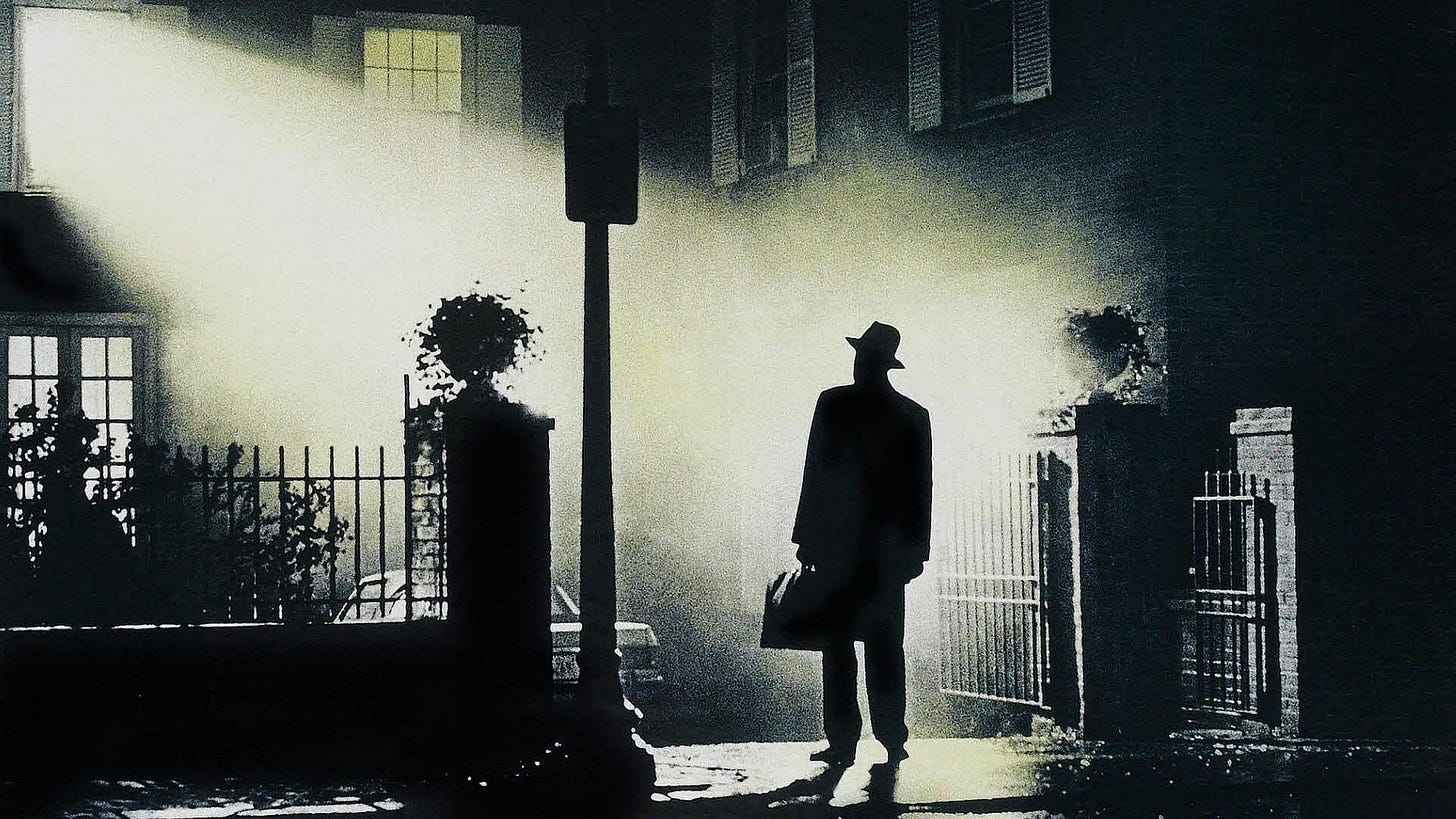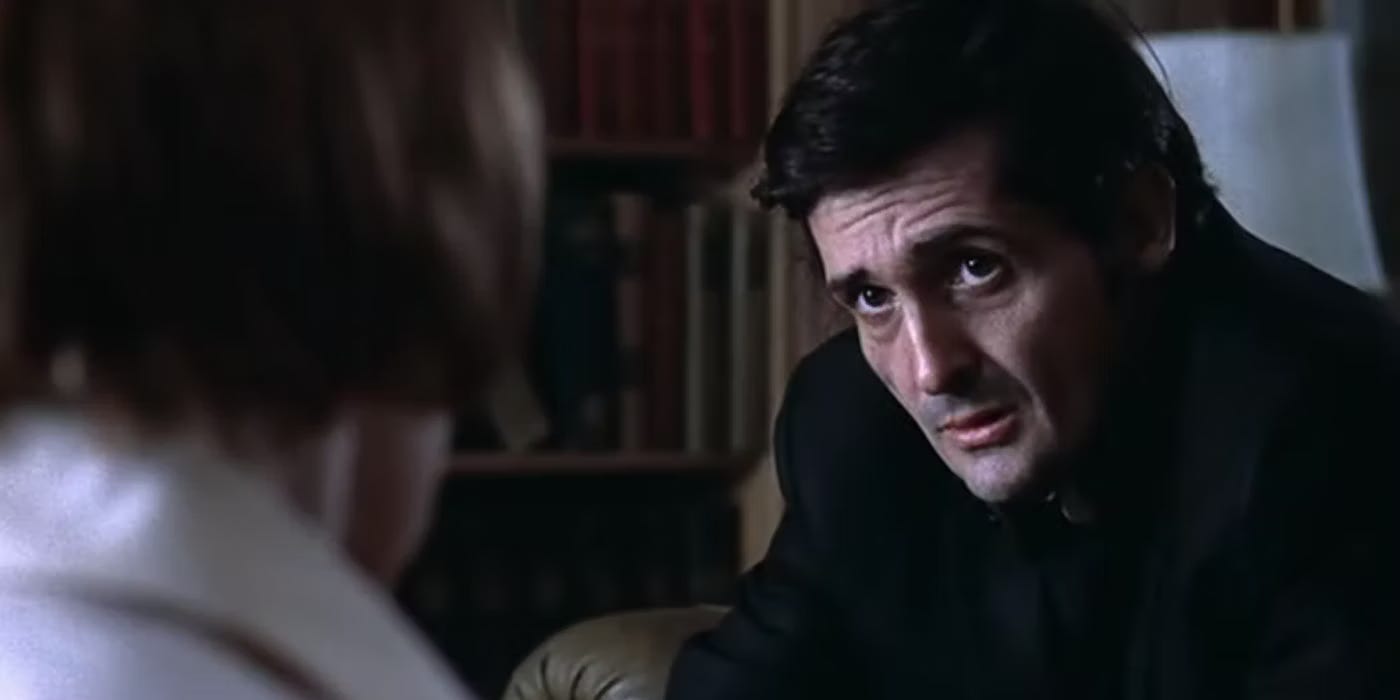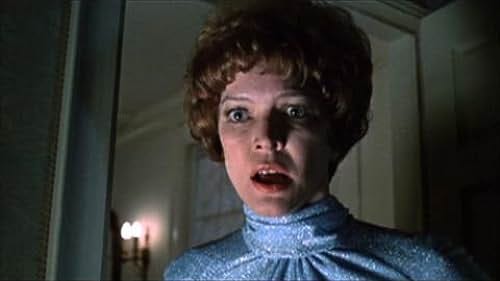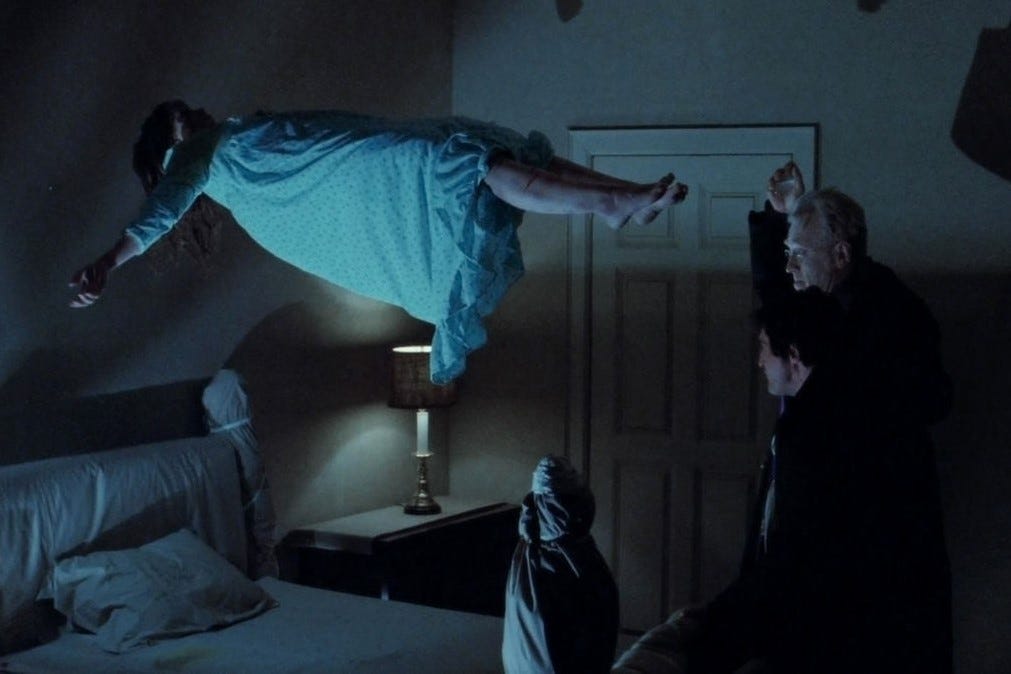A while back, I was chatting with a critic buddy and the topic turned to which horror movies actually scared us. Obviously, we brought up The Exorcist, and he admitted he never found it particularly scary because he didn’t believe in any of the spiritual issues it talked about. He was curious to know my thoughts on it, coming from my background of faith.
He seemed a bit surprised when I said that I didn’t find it all too scary, either.
The truth is, I struggle to find most supernatural movies scary, particularly religious-based ones. Oh, I enjoy the carefully constructed thrills of The Conjuring, but they’re the typical jump scares or suspense pieces; it doesn’t burrow under my skin. And I have very little interest in possession movies – they all boil down to the same things: growling little girls, spewed bodily fluids, people strapped to chairs or beds, and a priest with a crucifix. If you’ve seen one kid projectile vomit pea soup, you’ve seen ‘em all.
Most of these stories, including The Exorcist, lean heavily on Catholic iconography and theology, which is much different than the evangelical Baptist tradition in which I was raised. My denomination downplayed any suggestions of overt spirituality, supernatural occurrences or demonic presence. We believed the devil was real, but he was more interested in getting us to play Dungeons and Dragons than in getting our heads to spin.
My wife grew up in a different denomination, where spiritual threats were taken seriously and could make themselves manifest, and our differences on this matter have been of much discussion over the last few years. In fact, one of my big spiritual challenges is understanding that if I believe in a world where things are unseen, then I need to be able to accept the possibility of things I can’t explain. Is my faith just an intellectual exercise and a framework for morality? Or do I truly believe there’s a world behind this one that deals with deeper truths than we can often comprehend? And if I do, then shouldn’t I be more sober about the possibility that there is very real evil that can intrude, or will I just continue to distract myself with comfort and more plausible – which often means more palatable – explanations?
Revisiting The Exorcist for the first time in about 20 years, I found the movie did burrow under my skin and make me uncomfortable. But it’s not because of its shocks or moments of stark terror; rather, it’s for how vividly it portrays a struggle of faith and suggests that our comfortable lives may be inadequate insulation from real evils we try to ignore and may be ill-equipped to confront.
Dark night of the soul
It had actually been so long since I’d seen The Exorcist – and I’d only seen it once, at that – that I forgot how much of a slow burn it is. It’s a good 30 minutes before the movie begins to hint that young Regan’s problems might go beyond the psychological. In my memory, the film actually focused solely on Ellen Burstyn’s Chris MacNeil for its first half, not bringing in either of the priests until the final 30 minutes or so.
So I was a bit surprised to revisit the movie and find that its first 15 minutes take place outside of that foggy, stark Georgetown neighborhood and are instead set in Iraq, watching Father Merrin (Max Von Sydow) on an archaeological dig, where he unearths an idol that may play some role in Regan’s possession; the movie’s actually fairly unclear on how all this happens, although late in the film a police officer finds a similar statue at a murder scene outside Regan’s window. But obviously something bothers Merrin enough to abandon his project and return to the States, and it’s hinted that there’s some supernatural darkness afoot.
But as we head to Washington, DC, we find that Merrin is one of the few in the Catholic church who still takes supernatural dangers seriously. The film’s first half splits the focus between MacNeil and Jason Miller’s Father Karras, who’s been brought onboard as the church’s psychiatrist. When Chris sheepishly inquires about what it would take to secure an exorcism for her daughter, Karras tells her the solution would require a time machine because no one practices them anymore. All the problems formerly attributed to demonic possession are now thought to be psychological.
It’s a world in which even the most iconic spiritual institution is largely secularized. The church hires psychiatrists instead of exorcists. The first time we see a priest at all in the Georgetown segments is as an actor in a movie Chris is filming. Karras’ partner at the parish wears the collar, but he seems more interested in drinking and hanging out with celebrities. Far from a world in which everyone fears the demonic and suspects the devil at every turn, The Exorcist takes place in a world where God is largely perceived as dead and people are too distracted by the world in front of them to think about the one that might be beyond.
And Karras? He’s one of the faithful in an institution that has lost the faith, and he’s not too far from giving up his own. His mother has recently died and the film insinuates that Karras believes it might be his own vocation that contributed to her death. Because the priesthood required him to take a vow of poverty, he could only afford to get his mother into the worst of hospitals, where they were unable to treat her needs. Karras is, as I heard someone describe the plight of so many people of faith these days, standing at the back of the sanctuary, begging for one final reason to walk out the door. Does the plight of Chris and Regan give him one more chance to fight the good fight, or will it be the thing to crush his spirit?
The clergyman going through the dark night of the soul is not new; it’s a staple of these type of movies (likely because of this movie). But it’s one of the most palpable and authentic struggles of faith I’ve seen in a film. Miller gives the movie’s strongest performance, his eyes always unsure and on the verge of giving up hope. He’s kind but sad, a man who stands in for God in a world that has no need for Him. He’s a man of the cloth in an age that has no use for that, and it’s not until ancient evil surfaces that he begins to grab at any lingering vestiges of faith.
A parent’s worst fears
Chris MacNeil is not a person of faith.
She’s not a bad person; she, like many others, is just too busy and distracted to give it much thought. She’s an actress, currently shooting a movie in Washington, DC. She’s estranged from her husband, who lives overseas and can’t be bothered to call his own daughter on her birthday. She’s a fixture in the tabloids and spends a lot of her time at cocktail parties. We don’t know much about what she believes, but we can infer she’s likely not given it much thought herself. I usually don’t pay much attention when characters use “Jesus Christ” or “goddammit” as curse words in a film; Chris tosses them around, and it seems to be a none-too-subtle insinuation that she doesn’t put much thought or power to the person behind that name.
But Chris is a loving mother, who has a close bond with her young daughter, and her world is rocked when Regan begins suffering from an affliction she cannot understand or control.
This is my first time viewing The Exorcist as a father, and the plight of a parent watching their child suffer is perhaps the thing I found most hard to shake. And it largely has less to do with the overtly scary moments than with the simpler helplessness and frustration Burstyn captures, the sense of love and protection, mingled with the impotence that has her one step away from a breakdown.
A few years back, my daughter went through some health emergencies and I remember the stark panic as I watched her snap into a sickness I couldn’t help her with. I remember seeing her in the hospital, sedated and hooked up to tubes and wires, and breaking down in sobs. That feeling came back as Friedkin lingered on a shot of a nurse drawing blood from Regan, red casually spurting out as she fiddled with the tubes. The clanging, primitive MRI machine is almost as oppressive and assaultive as any of the supernatural happenings, and you understand why Chris nearly breaks when the doctor says the tests were inconclusive and suggests another round.
And then there’s the mental anguish of a mother realizing there is no rational answer for her child’s suffering. The concern for Regan’s well-being mingles with the deep embarrassment and confusion when the child interrupts a dinner party, tells one of the guests they’re going to die and then urinates on the rug. The shock of catching her daughter violating herself with a crucifix and then being slapped by her bloody palm.
Many of our memories of The Exorcist focus on everything Regan endures – and young Linda Blair was asked to go through a lot, and handles it well. But the true emotional and spiritual turmoil in this movie centers on Karras’ fleeting faith and Chris’s terror at the possibility of losing her daughter.
Is it scary?
In his 1973 review, Roger Ebert declared the movie as a “frontal assault.” And certainly while I’ve lingered on the more dramatic aspects of the movie, the sequences that are seared into most people’s minds are the ones of stark terror. The projectile vomiting of pea soup. Regan’s head doing a 360. Levitating beds and almost subliminal demonic images. Harsh growls and obscenities. A child overpowered by a demon and pushed to murder.
Here’s the thing, I don’t find much of that scary at all. I’m sure part of it is because so many films have copied and tried to one-up much of what The Exorcist pioneered. The scenes are effective – they capture the supernatural danger that has invaded a world portrayed otherwise so naturalistically. But I wouldn’t call them scary; they may actually feel a bit too cheap and exploitative for a film that is otherwise interested in having a rational discussion about faith and doubt. And I think the film’s climactic exorcism sequence deflates after Karras and Merrin initially leave the room; the final passages are rushed, and while they make emotional and thematic sense as a way to assuage Karras’ guilt and confront the demon head-on, it’s all a bit too sudden.
But the film still captures a sense of transgression, a palpable understanding that what’s happening to Regan is true evil. Hearing obscenities that are still shocking coming from the mouth of a young girl (in reality, an adult actor overdubbed the Captain Howdy lines) is still jarring. The crucifix scene is ugly, mean and blasphemous. The Exorcist still gets under the skin because Friedkin captures a sense that pure, demonic danger exists in a world that is otherwise familiar and rational. How does Chris go back to cocktail parties and making movies after knowing that any of this exists?
If you don’t have any spiritual beliefs, I can understand why The Exorcist might not work for you. And I can understand why the movie bounced right off me in my more evangelical days, when faith was more of an intellectual exercise.
But at 44 years old, at a place where I am trying to be more open to the hard to understand aspects of faith and embrace the mystery, I have to admit the possibilities raised by The Exorcist kept me up at night.
I want Karras to recover his faith, and much of that is because I’ve gone through my own struggles with doubt and come out on the other side believing there’s something beyond and behind all of this. But accepting a belief in a good and loving God means I also believe there is evil and an enemy. And I have to admit there are things beyond my own understanding; we’ve experienced them, and I’ve tried to my best to explain them away, to no avail. It’s scary to think that part and parcel of being a person of faith is being a person who believes there could be threats, evils and demons that can invade and assault.
And then you wonder what you’re doing wasting your time on trivial pursuits. And that’s the other thing that affected me about The Exorcist – the way I identified with Chris MacNeil and her friends’ attempts to find meaning in fancy parties, tabloid gossip, making movies and living in elegance, or to waive away the inexplicable with appeals to rationality and science, even when those possibilities have been exhausted. It’s an insulation against the possibility that there’s something deeper and more dangerous. But have we insulated ourselves so far that now we’re unprepared for anything that might lurk in the corners or try to steal our souls? 1 That’s a terrifying prospect to consider.
Listen, this is not where I thought this essay would go when I turned the film on last week or when I sat down to write this post. I thought I’d take the question “Is this movie scary” and discuss whether the pea soup and rotating heads made me shriek. But the power of The Exorcist is not in those overtly scary and assaultive moments. It's in its questions of faith and doubt and, if you’re willing to engage them, the implications that naturally follow.
So yeah, it’s a pretty scary movie.
One complaint I initially had was that Regan goes from normal to completely possessed a bit too quickly, without an appropriate amount of time for her mother to think this is all normal until it isn’t. In one scene, after Regan has begun acting odd, her mother alludes to a doctor’s visit that we haven’t seen – apparently, it was a deleted scene that’s included in the Version You’ve Never Seen from 2000 (the one with the Spider-Walk scene). That would definitely help the movie’s pacing. But I also like that perhaps Regan has been suffering since before the movie started, and we don’t learn about it until now because Chris has been concealing it and saying it’s no big deal. It would definitely tie into this theme about how we try to insulate ourselves from these possibilities.
Also a note on The Version You’ve Never Seen from 2000: I believe that was the version of the film I initially saw twenty years back. What I watched this time was the theatrical cut. Like I said, I would have potentially preferred Friedkin left in the visit to the doctor for pacing concerns, and I seem to remember being freaked out by the spider-walk (watching it on YouTube, though, it’s a bit silly). But I didn’t feel anything substantially different between the two; maybe a few less subliminal demon shots in the theatrical.









The directors cut makes it scarier I think.
My observations: https://boxd.it/1JOuNb